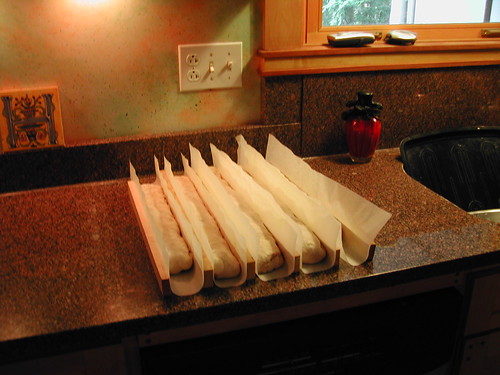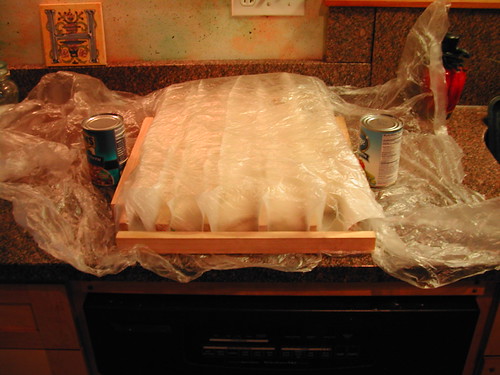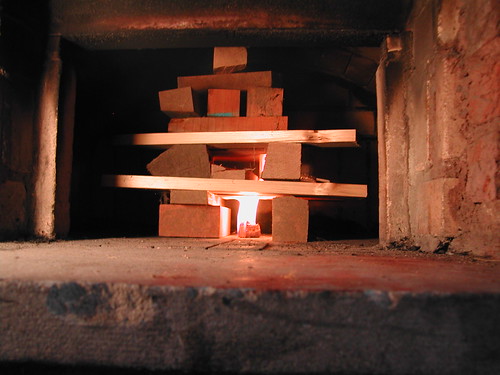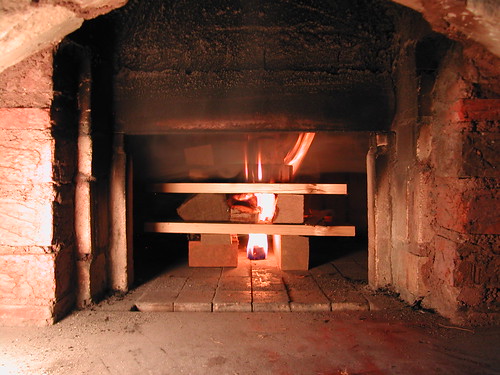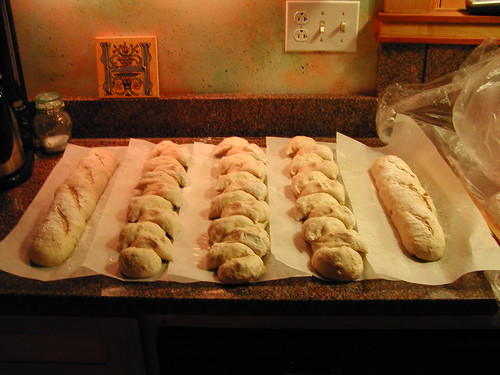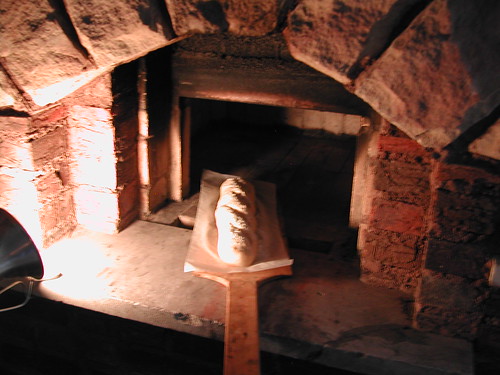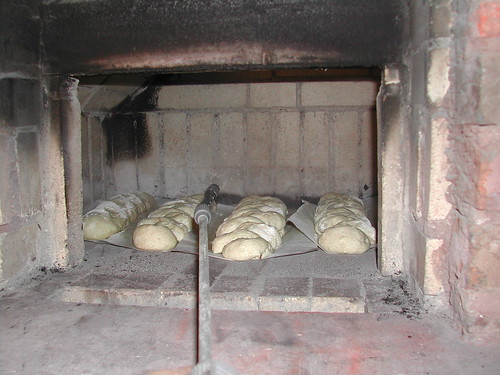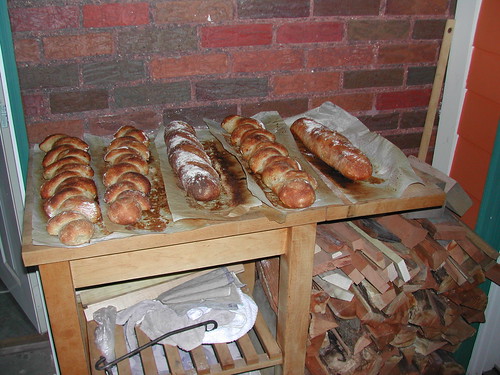After some successfully delicious baking sessions...
Spinach Cheese Boule - made wonderful sandwich bread
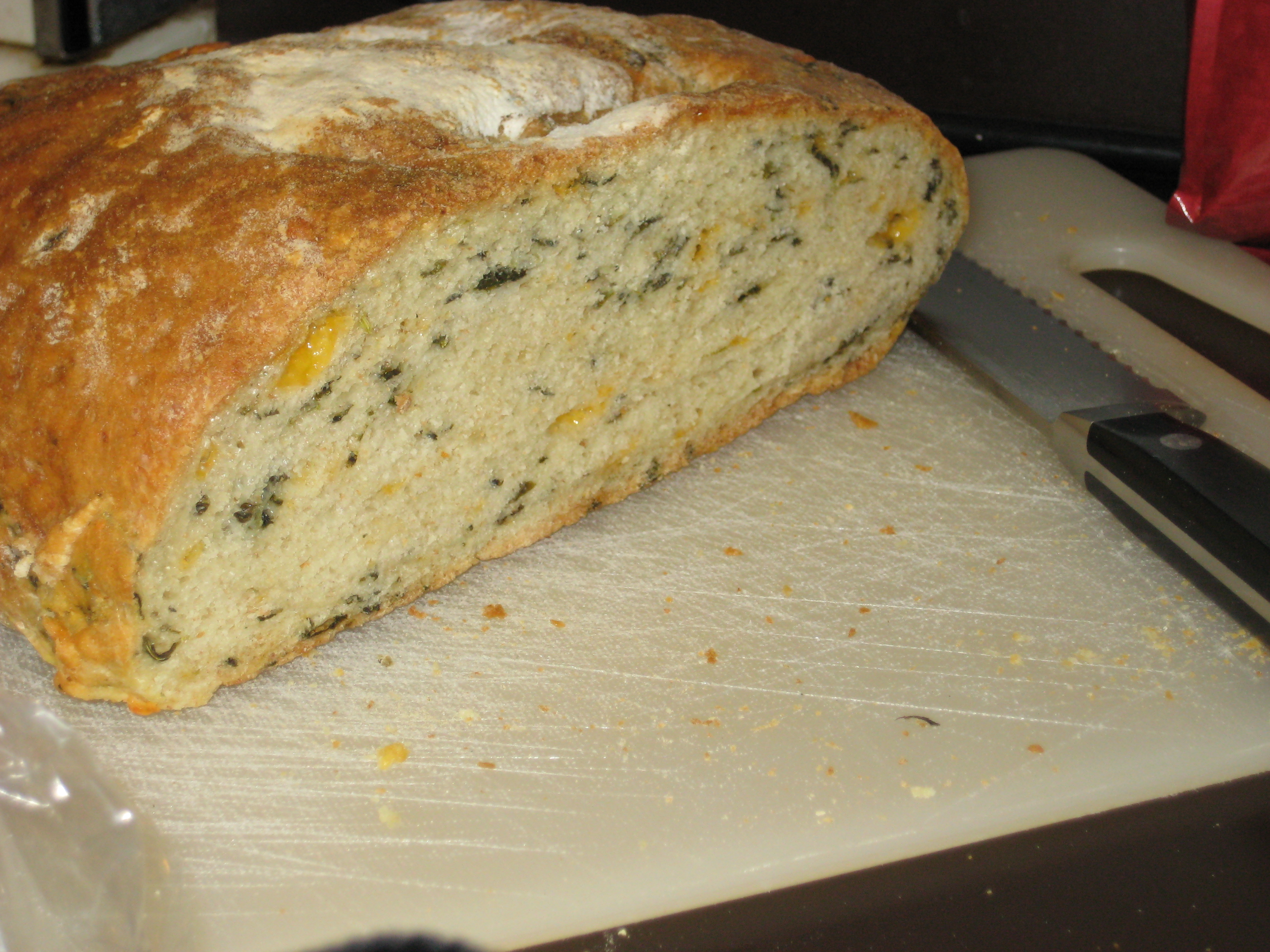
Pain de Provence - absolutely amazing!!! SO good as toast! (but, yes, I really need to work on my scoring, not just my usual complete degassing of a bread as I attempt to slice...)

...I finally decided it was about time (as I started bread baking last November or so?) to try to develop my own recipe.
And I chose the obvious.
With the reference of numerous other bread recipes, I ended up with my Sweet Green Tea Bread.
(The glaze was stolen and slightly altered from Beth Henspengers Sweet Vanilla Challah (so good!!) in her book Bread for All Seasons)
Anyhow, here was how it was supposed to go:
Sweet Green Tea Bread
Preferment
1 tbsp active dry yeast
3/4 cup warm water or milk
1 cup all purpose flour
Dough
2 ½ cups all purpose flour
1/3 cup sugar
1 tsp salt
6 tbsp green tea leaves
1 cup strongly brewed green tea (with or without the tea leaves)
1 well beaten egg
3 tbsp very soft butter
Glaze
1 egg yolk
¼ tsp vanilla extract
½ tsp sugar
Sesame seeds (optional)
Preferment: Mix the yeast, warm milk or water and flour together, set aside ½ hour minutes.
Glaze: blend ingredients, set aside.
Dough: In a large bowl blend the flour, sugar and salt. Grind half of the green tea into powder. Blend the (dry) green tea into the (liquid) green tea, add egg and let it sit for a few moments until the (dry) green tea is soft.
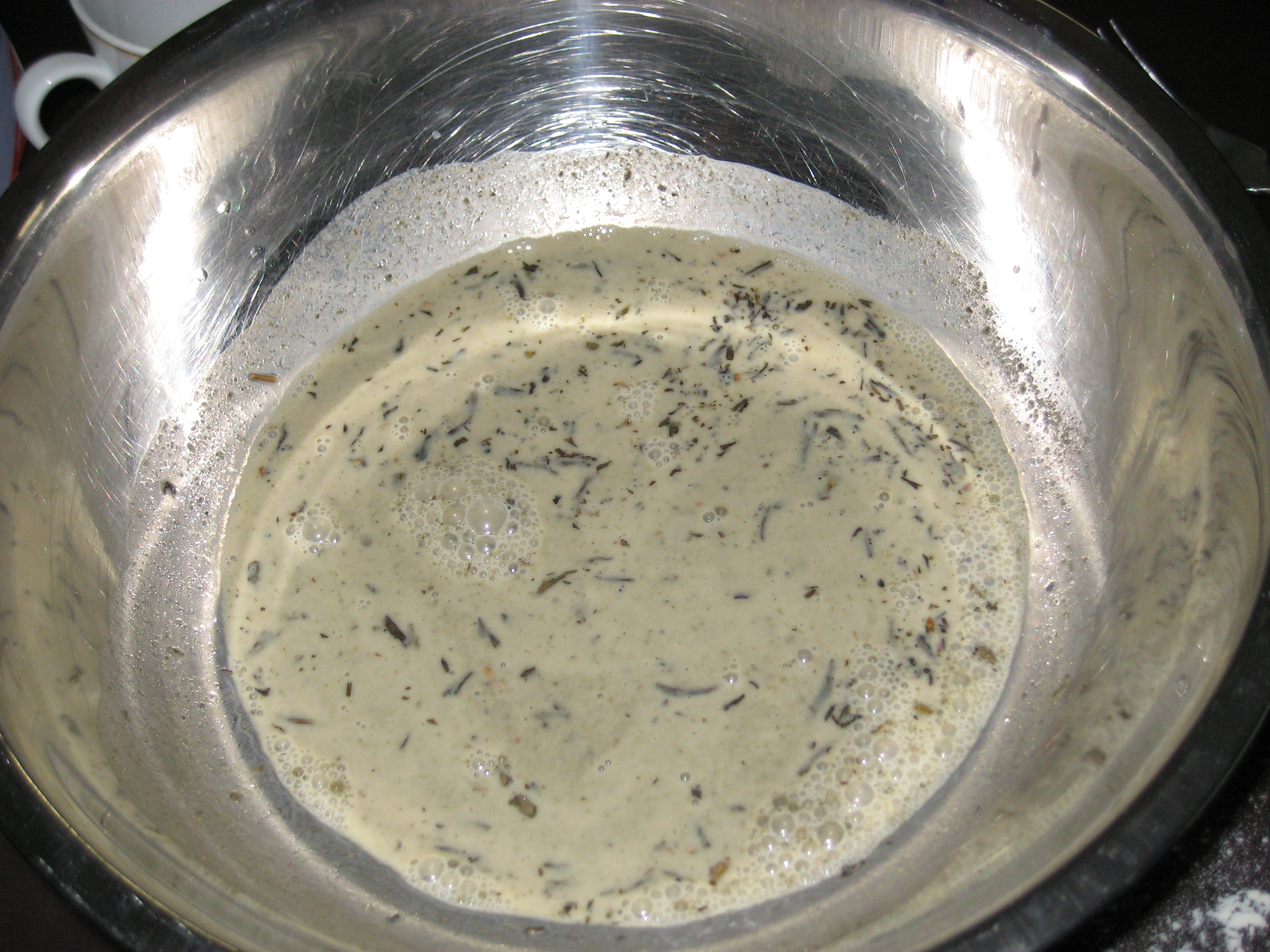
Add the green tea mixture into the dry ingredients and then beat in the butter, lastly mix in sponge. Knead with generously floured surface and hands until smooth and satiny (or until whenever you think it is ready- it was more of a guess on my amateur behalf).
First rise- until double in bulk.
Second rise- mostly degas, shape into one large loaf or two small ones and let the dough rise until double in bulk again.
Bake- Glaze and sprinkle with sesame seeds before putting in the oven preheated to 350ºF (with a preheated pan in bottom). Pour water in the pan and spray the oven walls and bake for around 30-50 minutes.

Looks just like one big cha sui bao! (Chinese barbaque pork bun)
And... here was how it really went. I forgot to put in the butter and went very much off schedule for near the ending moments of the final rise I ended up having to leave the poor bread on its own for around three hours... although I did pop it in the cellar to try to slow rising!
Despite that it turned out wonderfully and the smell that filled the house was heavenly!
Now if I were to make it again... I think I would cut the ground green tea down to only 2 tablespoons, I have to admit there might have been just a bit too much.
Please, if you have an advice for improving my recipe please, please reply! It is probably in dire need of improvement!














